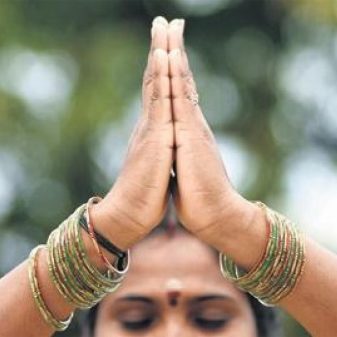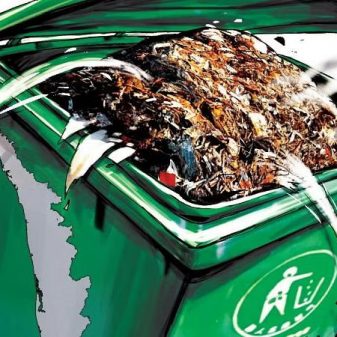
Thangmoi Haokip and Biakthang Zou
Introduction
The 14th Nagaland Legislative Assembly witnessed the voters sticking with the status quo. The BJP-NDPP retained power, winning 37 seats in the 60-member Nagaland Assembly. While the Nationalist Democratic Progressive Party (NDPP) won 25 seats, the Bharatiya Janata Party (BJP) won 12 seats. The 2023 Assembly polls scripted history by electing two women for the first time. They are from NDPP and greenhorn in politics- Hekani Jakhalu (Dimapur III) and Salhoutuonou Kruse (Western Angami). The Assembly election also saw the NDPP’s power consolidation in Nagaland. NDPP, today, is the numero uno regional party in the state occupying the space vacated by the Naga People’s Front (NPF). The NPF, the oldest regional party in the Northeast, has suffered a setback in Nagaland, winning only two seats out of the 22 constituencies it contested.
The biggest winner and loser
The Assembly election results underline the emergence of NDPP as a regional party. The party was formed in 2017 and can still be considered a relatively new entrant in Naga politics. Since making its political debut in the 2018 Assembly election and winning the contest by stitching an alliance with the BJP, there was no looking back for the party. It steadily navigated the complexity of state politics with deft and pragmatic partnerships. In the process, it successfully ousted the position of the erstwhile dominant NPF from its political perch. The party has emerged more assertive, with its tally increasing from 17 in 2018 to 25 seats in the 2023 Assembly election. It, thereby, established its dominance in the state. This performance by the NDPP in the ‘fluid, yet multi-party, electoral system,’ to quote professor Hausing, made the party the biggest winner in this election cycle.
The NDPP’s fortune is rising, while the NPF is losing ground. The political prospect of this once-dominant regional party in the state appears to be weakening. The party that ruled Nagaland for 15 years, from 2003 to 2018, was reduced to two seats in the 2023 Assembly election. This debacle was a far cry from the past electoral performances of the party. Its fortune started dipping ahead of the 2018 polls when Neiphiu Rio quit, and the BJP struck a seat-sharing deal with the NDPP. The party suffered a hammer blow in 2022 when 21 of its legislators merged with the NDPP. Shunned by its once alliance partner BJP and ceding ground to NDPP, the party that bagged the highest in the last election with 26 seats is now the biggest loser, dwindling to just two.
Behind the rise of NDPP: Neiphiu Rio and BJP’s role
Two factors determine the rise of NDPP. Neiphiu Rio and the BJP. The support of the BJP for NDPP would not have happened without Neiphiu Rio. BJP ditched NPF and supported the NDPP when Rio defected from the former and joined the latter. Rio was a trusted ally of the BJP. The BJP saw him as a political asset to make further inroads into Naga politics. Rio, a former NPF, was instrumental in BJP ditching the NPF. This new political alignment acted as a catalyst in
causing a paradigm shift in the state political power from NPF to NDPP. The NDPP, 17, along with BJP, 12, came to form government in 2018. The two parties again formed a pre-poll alliance in 2023 and returned to power again.
The NDPP’s spectacular showing paved the way for Chief Minister Neiphiu Rio’s fifth term, a record that will eclipse SC Jamir’s tenure as the longest-serving Chief Minister of Nagaland. Rio began his political career in the youth wing of the United Democratic Front (UDF) and subsequently joined Congress. He defected from Congress in 2003, joined the NPF, and immediately became the Chief Minister. Neiphiu Rio again left the NPF in 2017 and joined NDPP amid internal differences with the party leaders. A master strategist with expertise in forging alliances, he led the coalition of BJP-NDPP along with the support of National People’s Party (2), Janata Dal (United) (1), and an Independent to form the government in 2018, ending the 15-year reign of NPF in the state. He again proved his political acumen by striking a pre-poll alliance with the BJP in 2023, winning 37 seats to return to power. Rio’s resilience, leadership style, and widespread appeal contributed to the success of the NDPP party so far.
Another success of the NDPP as a regional party is its partnership with the BJP. Before the 2018 Assembly election, the BJP ended its 15-year association with the NPF and formed a new alliance with NDPP. This breakup contributed to the downfall of the NPF and helped the NDPP rise. In the last two elections of 2018 and 2023, the BJP supported the NDPP in forming a coalition government in the state. Though the BJP might be playing second fiddle to NDPP, it nevertheless plays an instrumental role in consolidating the latter’s position in Nagaland.
Crisis in the NPF
The results of the 2023 Assembly election have brought the focus back on the NPF. The party that was in power in the state between 2003 to 2018 seems to be a pale shadow of itself. Though it was the single largest party with 26 seats in 2018, the NDPP outmaneuvered it by forming the government with the BJP and other like-minded parties. The party had to contend with sitting in the opposition benches. This year, the party contested 22 seats, and its tally plummeted to two while its vote share fell from 38.78 percent to just 7. 1 percent. The en masse defection of 21 of its sitting MLAs in 2022 to NDPP weakened the party further and helped in clearing the decks for the return of NDPP-BJP.
The NPF, led by an octagenarian, Shurhozelie Lietzietsu, has faced an unprecedented crisis in recent years. The party lacks a strong organization and a popular leader at this crossroads. Though Dr. Lietzietsu can be considered an ideologue with good organizational skills, he still lacks the charisma and popularity of Rio. Moreover, the party did not have the political will and resources to match the might of NDPP-BJP. Achumbemo Kikon, the party’s general secretary, cited limited resources for fielding only 22 candidates in the fray. The state’s oldest regional party faces stiff electoral challenges from NDPP and other political parties. It needs to reinvent itself and rise above the challenges to stay politically relevant in Naga politics.
Conclusion
The Assembly results of 2023 highlighted the trajectory of two political parties. While the political graph of NDPP is on the rise, the decline of NPF continues. The shifting of political wind from the NPF contributed to the growth of the NDPP. Frictions between its triumvirate, Neiphiu Rio, current President of NPF Dr. Shurhozelie Lietzetsu, and Rio’s successor as NPF Chief Minister, T.R. Zeliang, crippled the NPF. The party seems to be going out of steam as it has probably played its last desperate fight in 2023 if it does not revive itself. The changing dynamics in state politics might also have political implications beyond Nagaland. As a political party that has consolidated its position, it may look to expand its footprints beyond the confines of Nagaland. The party might challenge the dominance of NPF in Naga-inhabited areas of Manipur. But, for now, it’s the NDPP that rises and NPF that falls in Nagaland.
(The writers are scholars from Political Science Department, Manipur University)





